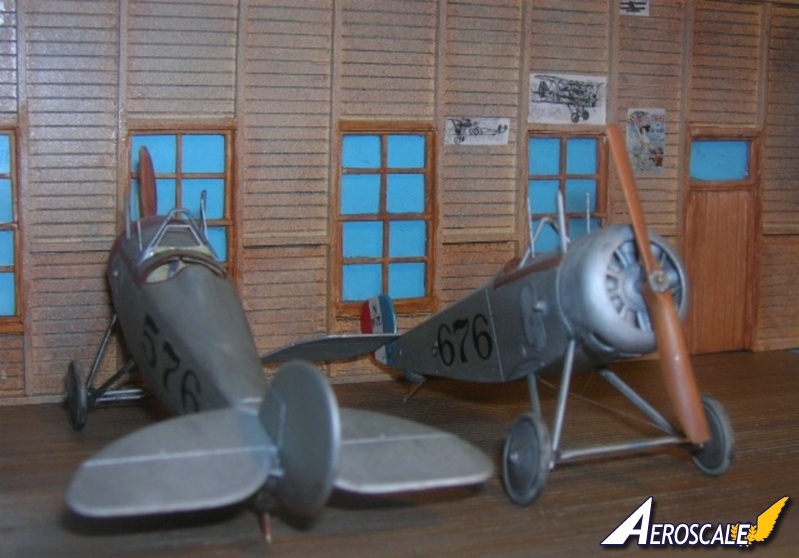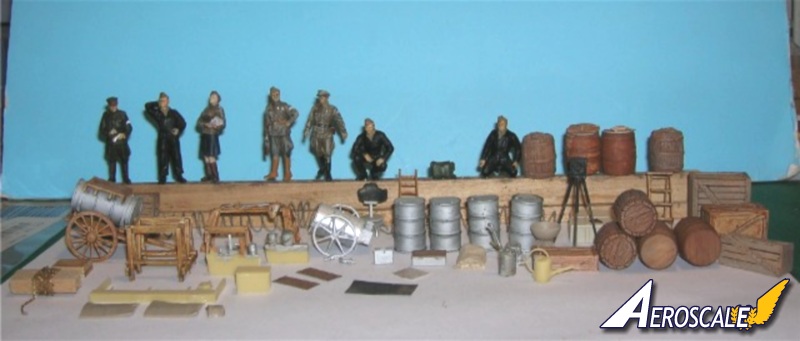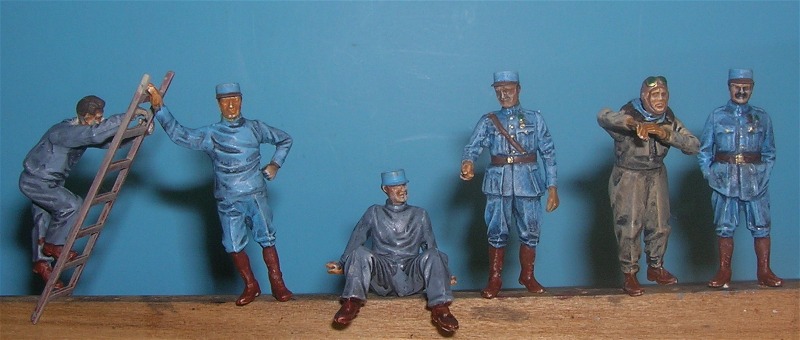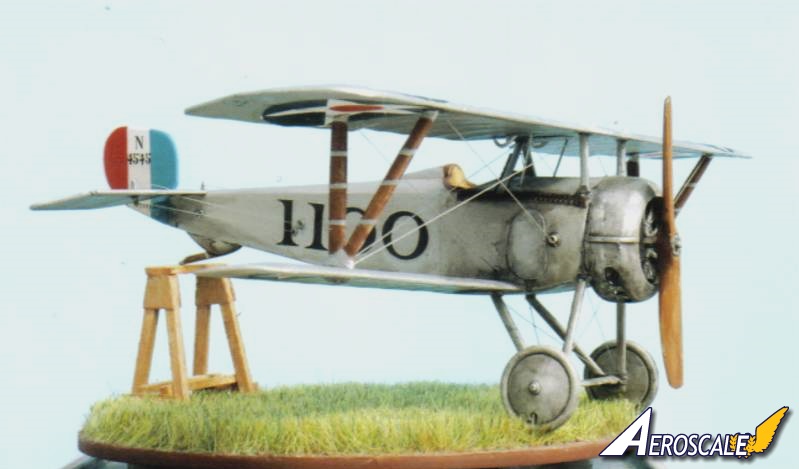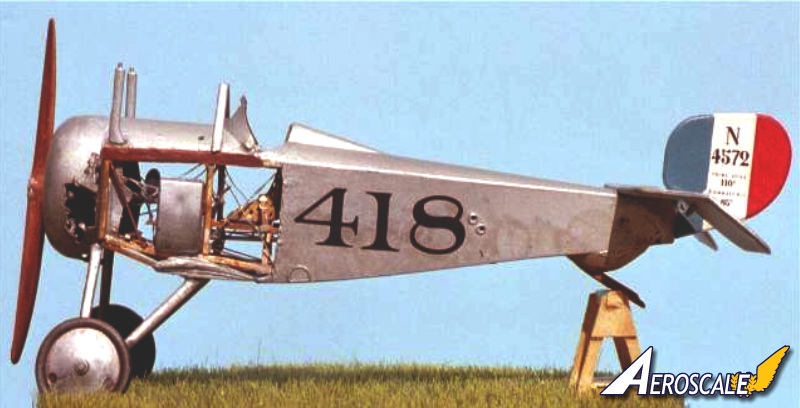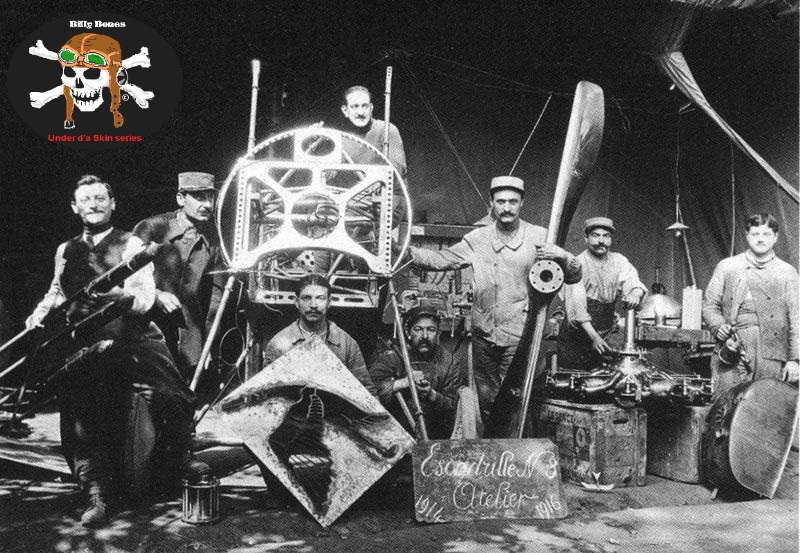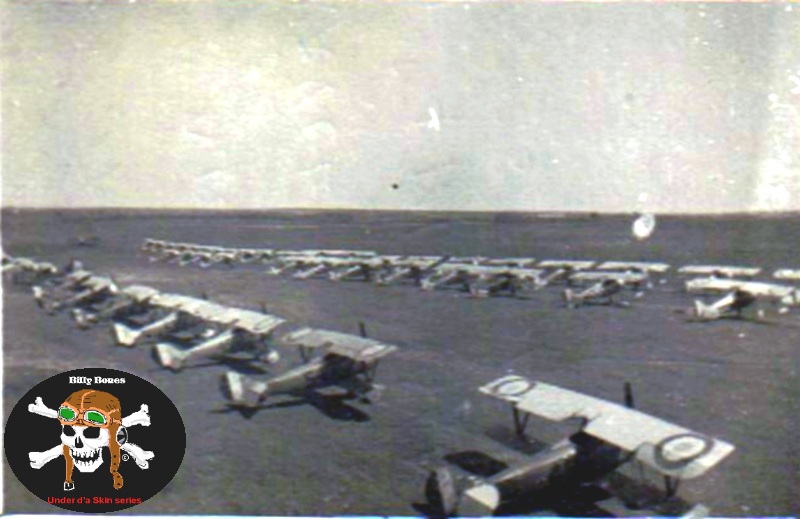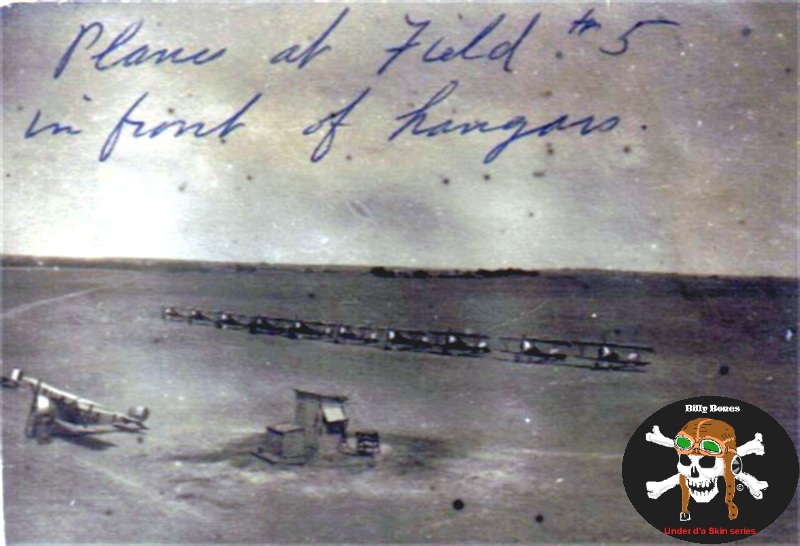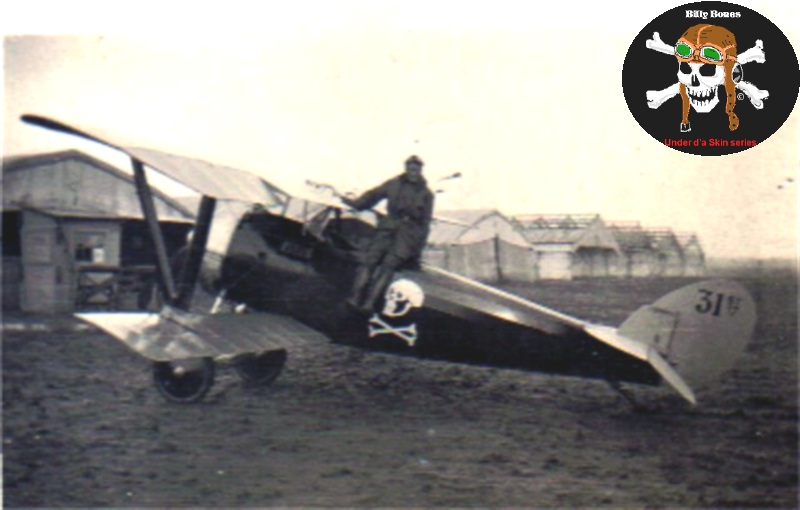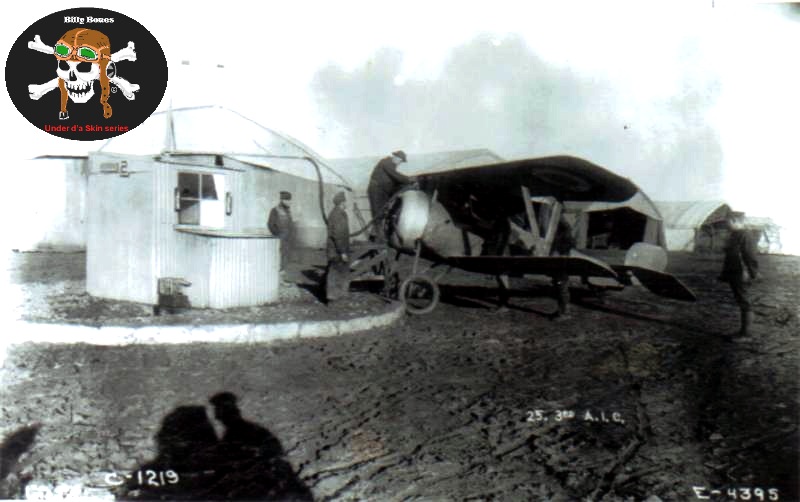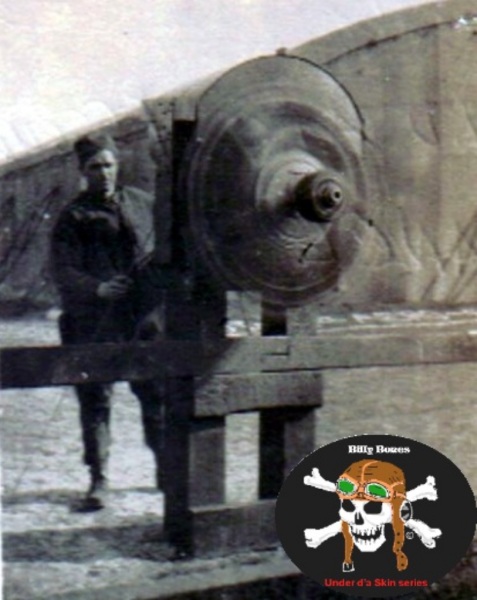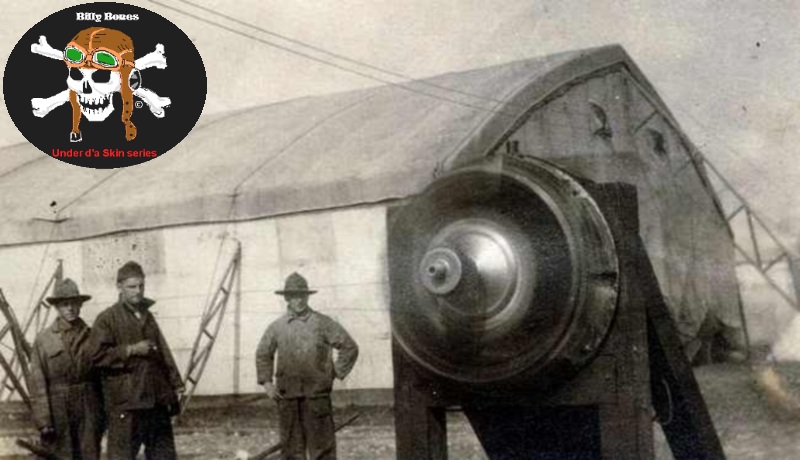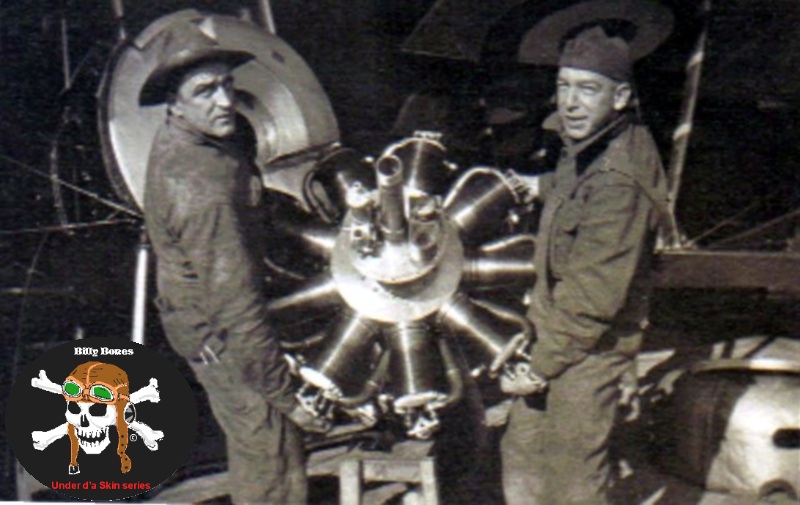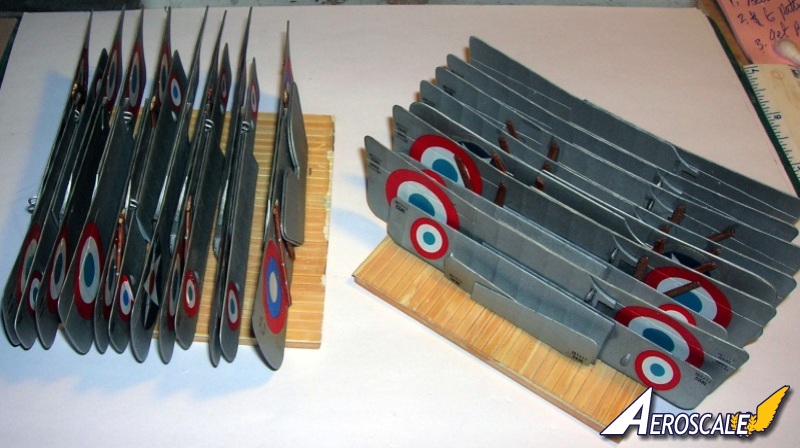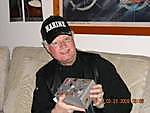Summary of American training at Issoudon:
(From the Manuscript ‘Billy Bones - An Accounting of the 31st Aero Sqdn.)
If you had found yourself in Issoudon, France at the Third Aviation Instruction Center (3rd A.I.C.) with the American Air Service as a pilot trainee in 1918, it would be a matter of course that you come to Field Five. Landings, Spirals and Acrobatics were the daily meat here. Considered to be the advanced training phase Field Five had a wicked reputation for being “the field of graves” to many “would-be knights of the air.” The price of training 3,111 men at Issoudon was $27,045,395.53 in 1918 alone. This created an average cost per man of $8,693.47. If the war had continued through 1919 the projected total cost of training was expected to rise to about $40,000,000.00. At the Third Aviation Instruction Center” there were assigned as cadre 1,165 officers and 4,860 enlisted men to keep the training schedules on target and aircraft flying for the operations of its eventual 14 airfields training both pilots and observers.
At the headquarters of the American Expeditionary Forces in Paris it was with typical military consideration that the Projects Department selected the worst possible land for use as a training area under the most grievous weather conditions. The hardships of military life during war are compounded by the rear echelon types that make decisions from their comfortable offices. Farmland was set aside for the use of the American Air Service training. Almost over-night barracks and hangars went up, roads were cut and graded and trucks traveled to disbursement points to pick up water, supplies, cadets and coffins in a daily routine. Much like a casual view of an ant farm, each and every movement of the hive was meant to prepare young men to face the duty of war in the air.
Each Field had its academic and operational specialties. Depending on when a student passed through the 3rd A.I.C. some classes were moved from one Field to another as it expanded and grew. Field One taught Taxing in clipped wing Morane Saulnier Parasol (Penguins) types. This was needed to teach the novice about controlling the machine on the ground first. Field Two taught Dual Control Operations on Nieuport 10 and 12 types (23 meter.) This involved the student being watched over by an instructor. If there was a problem the instructor could take over control of the machine. Field Three students flew Cross-Country flights. These flights were to teach the student how to recognize familiar terrain features and be able to orientate him self by using landmarks. Field Four familiarized students with the Nieuport 21 (18 meter types) and later on, the Nieuport 24 (15 meter types.) The types chosen for training purposes included Nieuport 21, 21 bis, 24 and 24 bis. Field Five as discussed earlier taught Full Power Landings, Spirals and Aerial Acrobatics. Most of these instructions were done on the ground with the student in the cockpit and the French instructors standing on a ladder beside the aircraft counting out the steps in a given maneuver , “Un. Deux, Trois, Quatre. Then the maneuver was attempted inflight. At Field Six students learned to land an aircraft “Dead-stick” (motor power off.) Field Seven was used for Formation Flying. Field Eight was where the students were transitioned to newer and armed fighters like Spad, Sopwith, SE 5a and late Nieuport types. Students were given sealed orders and told to go up and hunt a fellow student, the“enemy” in a certain area with an aircraft that would be camera gun equipped.. Field Nine was developed to include a gunnery range, so when the French school at Cazaux was full students could carry on their training. Some veterans have said that they believed that the graves were at Field Thirteen. The fact appears that there were some graves at all of the operational fields. Fields 10 -14 handled Bomber and Observer’s operations training. Cadre and students are quoted as saying that “...there was a funeral at the 3rd A.I.C everyday but Monday and the day after it rained.”
More pilots and students were killed on the Nieuport 21 (18 meter) type than any other according to former Lt. Temple N. Joyce. Who not only graduated from the 3rd A.I.C. in Feb. 1918. but returned in mid 1918 to become its Chief Test Pilot and Accident Investigator. The Nieuport 21, “18 meter” (with 80 hp LeRhône rotary)was chosen to be the first trainer for the Americans. It was essentially a Nieuport 17 C.1 without armament. Since it wasn’t intended to carry any armament or ammunition it was not necessary to have a Nieuport 17 motor (110-120 hp LeRhône rotary) to attain a similar performance for students. The “bis” suffix was denoting a variation that might include altered wing, tail or fuselage surfaces. These variations were often incorporated in subsequent production types as standard features. The Nieuport 21 bis included a fully rounded or “faired” fuselage and the Clerget 110hp rotary. The Nieuport 24 had the similar layout but included alterations to wings ,15 meters in area, tail and a fuselage rounded out using stringers from cockpit to tail. The Nieuport 24 bis kept the altered fuselage and wings but reverted back to the Nieuport 17 and 21 vertical and horizontal tail surfaces. The Nieuport 27 bis was essentially a Nieuport 24 bis with a split axle like those found on Sopwith fighter aircraft. It has been noted that at least some of the instructors or Commander’s aircraft often kept the original/ higher horsepower motors with 110 - 120hp LeRhône 9J, Clerget 9Z or 9B types. When a class of students finished their courses at Field Five, they were transferred to Field Seven. If the class at Field Seven is still finishing your class would have stand-by waiting at Field Five, Since there was very limited barrack space this could hold up the class that was due to come to Field Five. The old “Hurry up and wait game“at its finest. The only Field that never seemed to experience this concern was Field Thirteen. As stated earlier each of the existing ‘Fields’ seemed to have its share of graves by Summer 1918. There is no indication that after Field Thirteen was established that any existing graves were moved from the other Fields to be re-interned there.
In the end it was all erased. The land was returned to the farmers. The buildings and hangars were torn down. The graves of the fallen instructors and students were moved to perpetual cemeteries. In 1962 a former Instructor at Issoudon, Mr. Keeling Pulliam of Field Four who’s various Nieuport fighters were painted like 1.American Eagle & 2. A carnivorous Flying Fish ( not the ship called ‘The Jazbo.’ ) said when he visited the original site he could find nothing to prove that there was ever a training center. That is until he ventured into a stand of trees where he found the stone pillar that had once served as part of the entrance to the Main Fields (One -Two & Three.) These were located at the hub of the Third Aviation Instruction Center’s operations in 1918.











